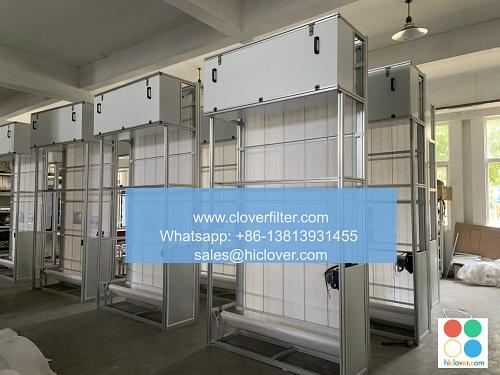How to Change Your Air Filter: A Step-by-Step Guide

How to Change Your Air Filter: A Step-by-Step Guide
Changing your air filter is a simple and essential maintenance task that can have a significant impact on the quality of the air you breathe and the efficiency of your heating and cooling system. In this article, we will guide you through the step-by-step process of how to change your air filter, highlighting the importance of filter replacement and its application areas.
Why Change Your Air Filter?
Changing your air filter is crucial for several reasons:
- Improved Air Quality: A clean air filter ensures that your home remains free from dust, pollen, and other airborne pollutants, improving indoor air quality and reducing the risk of respiratory issues.
- Increased Energy Efficiency: A clogged air filter can lead to higher energy bills, as your heating and cooling system works harder to compensate for the blockage. Replacing your filter ensures optimal system performance and energy efficiency.
- Prolonged System Life: A dirty filter can damage your heating and cooling system, leading to costly repairs or even complete replacement. Regular filter replacement can help extend the life of your system.
Choosing the Right Filter
Before you start the replacement process, it’s essential to choose the right filter for your system. There are various types of filters available, including:
- Fiberglass filters: Suitable for most households, these filters are economical and effective at capturing larger particles.
- Pleated filters: Designed for homes with pets or allergy sufferers, these filters are more effective at capturing smaller particles and gasses.
- HEPA filters: Highest-efficiency filters that capture 99.97% of particles and gasses, ideal for households with severe allergy or asthma issues.
Step-by-Step Instructions
- Turn off your system: Switch off your heating and cooling system to ensure your safety while working on it.
- Locate the filter: Identify the filter location, usually found in the return air duct or on top of the furnace or air handler.
- Remove the filter: Gently pull out the filter, taking care not to touch any electrical components or wires.
- Install the new filter: Place the new filter in the slot, ensuring it is properly seated and secured.
- Replace the filter cover (if applicable): If your filter has a separate cover, replace it to maintain system integrity.
- Turn on your system: Once the new filter is in place, switch your system back on and test it to ensure proper airflow and operation.
Additional Tips and Considerations
- Schedule a filter replacement: Consider scheduling a regular filter replacement service to ensure your air quality and system performance remain optimal.
- Monitor your filter: Regularly inspect your filter to ensure it’s not clogged or damaged, which can affect air quality and system performance.
- Consider professional assistance: If you’re not comfortable with the replacement process or have a complex system, consider consulting a professional HVAC technician.
Conclusion
Changing your air filter is a simple, cost-effective way to maintain a healthy and comfortable living space. By following these step-by-step instructions and considering the importance of filter replacement, you can enjoy improved indoor air quality, reduced energy bills, and prolonged system life. Remember to choose the right filter for your needs and schedule regular replacements to ensure optimal performance and efficiency.
It looks like you’re ready to get started! However, I’m not quite sure what you’d like to do or talk about. Could you please let me know what’s on your mind? Do you have a specific topic in mind, or would you like me to suggest some conversation starters?

